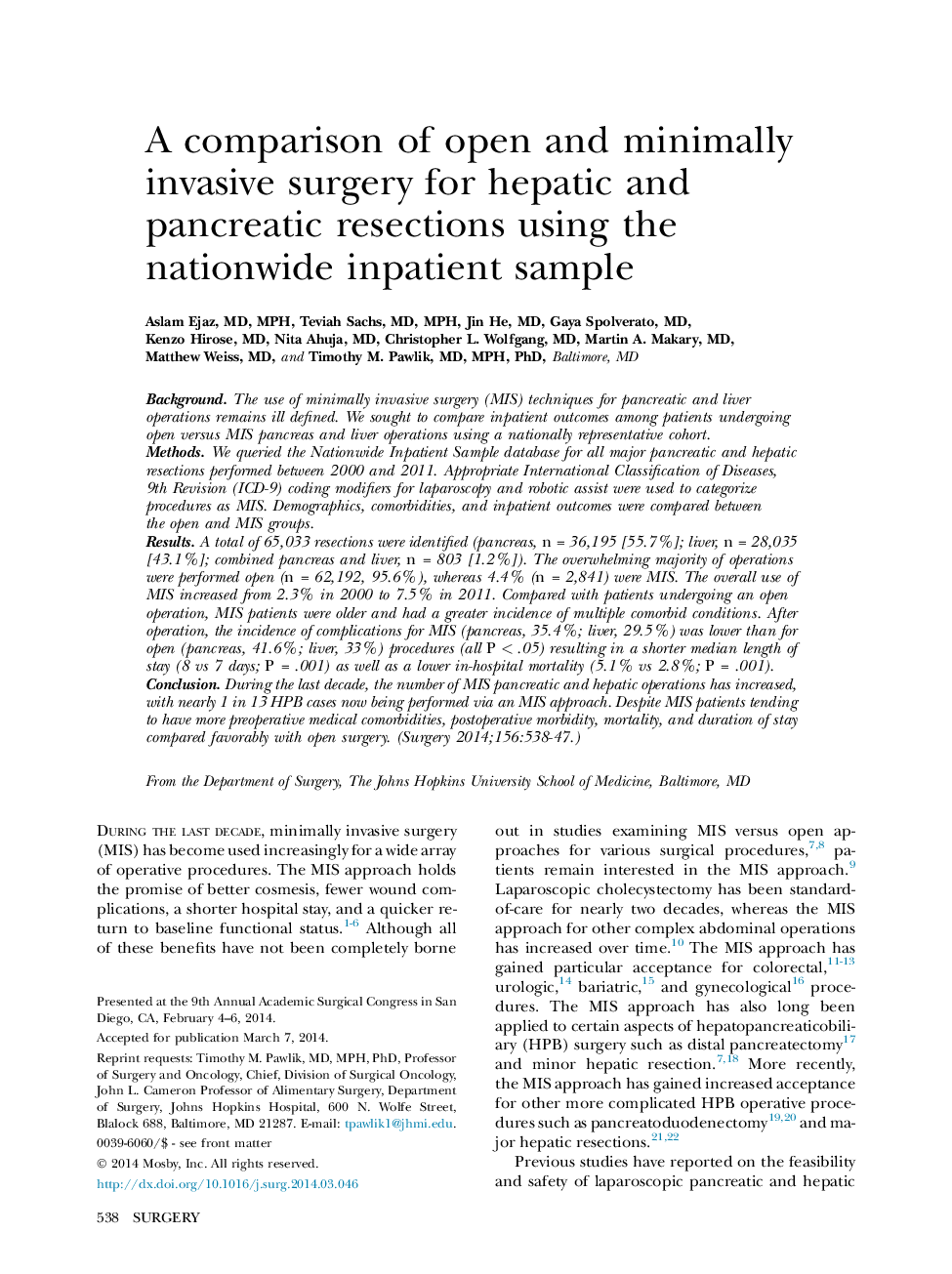| Article ID | Journal | Published Year | Pages | File Type |
|---|---|---|---|---|
| 4307122 | Surgery | 2014 | 10 Pages |
BackgroundThe use of minimally invasive surgery (MIS) techniques for pancreatic and liver operations remains ill defined. We sought to compare inpatient outcomes among patients undergoing open versus MIS pancreas and liver operations using a nationally representative cohort.MethodsWe queried the Nationwide Inpatient Sample database for all major pancreatic and hepatic resections performed between 2000 and 2011. Appropriate International Classification of Diseases, 9th Revision (ICD-9) coding modifiers for laparoscopy and robotic assist were used to categorize procedures as MIS. Demographics, comorbidities, and inpatient outcomes were compared between the open and MIS groups.ResultsA total of 65,033 resections were identified (pancreas, n = 36,195 [55.7%]; liver, n = 28,035 [43.1%]; combined pancreas and liver, n = 803 [1.2%]). The overwhelming majority of operations were performed open (n = 62,192, 95.6%), whereas 4.4% (n = 2,841) were MIS. The overall use of MIS increased from 2.3% in 2000 to 7.5% in 2011. Compared with patients undergoing an open operation, MIS patients were older and had a greater incidence of multiple comorbid conditions. After operation, the incidence of complications for MIS (pancreas, 35.4%; liver, 29.5%) was lower than for open (pancreas, 41.6%; liver, 33%) procedures (all P < .05) resulting in a shorter median length of stay (8 vs 7 days; P = .001) as well as a lower in-hospital mortality (5.1% vs 2.8%; P = .001).ConclusionDuring the last decade, the number of MIS pancreatic and hepatic operations has increased, with nearly 1 in 13 HPB cases now being performed via an MIS approach. Despite MIS patients tending to have more preoperative medical comorbidities, postoperative morbidity, mortality, and duration of stay compared favorably with open surgery.
